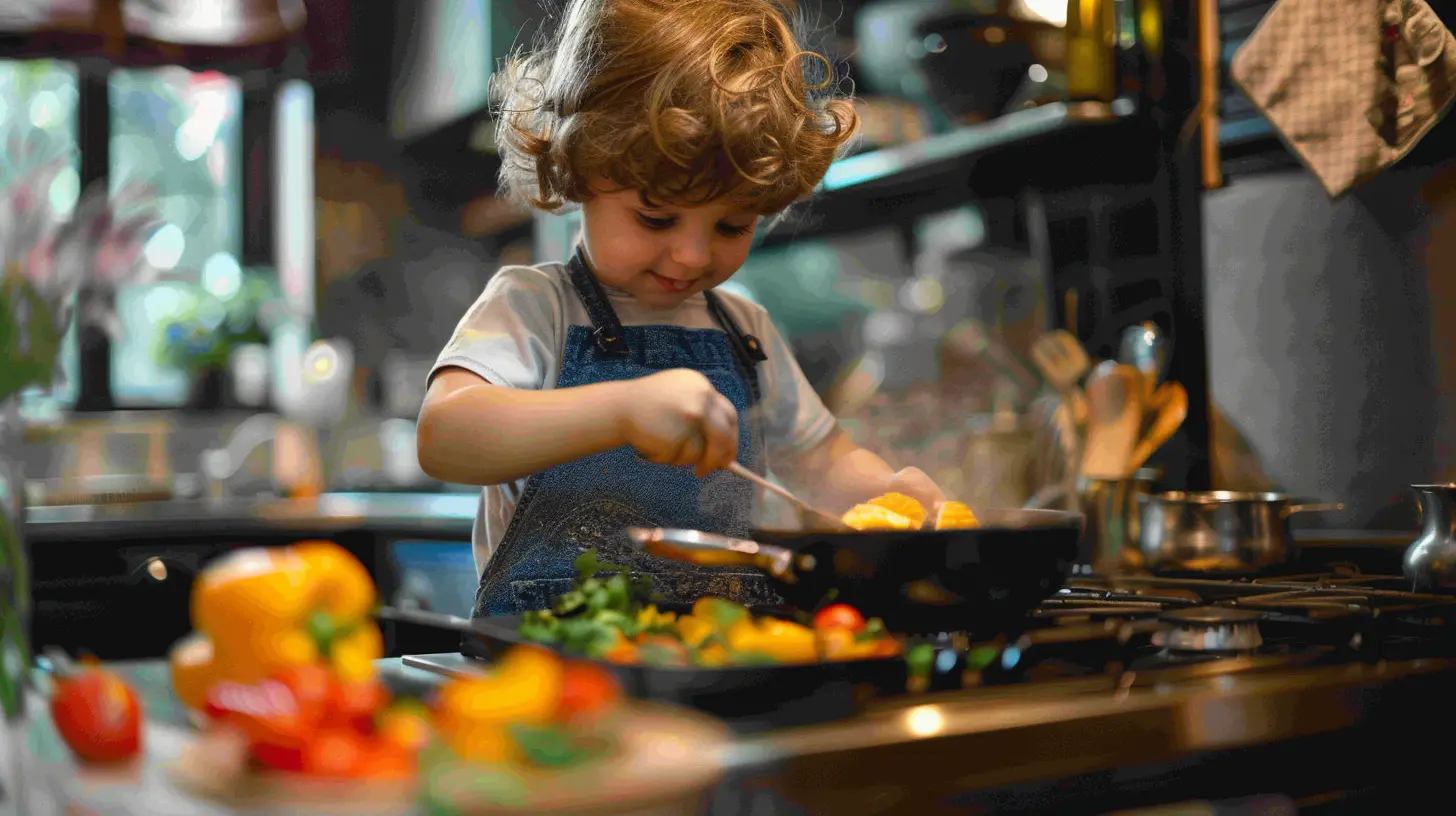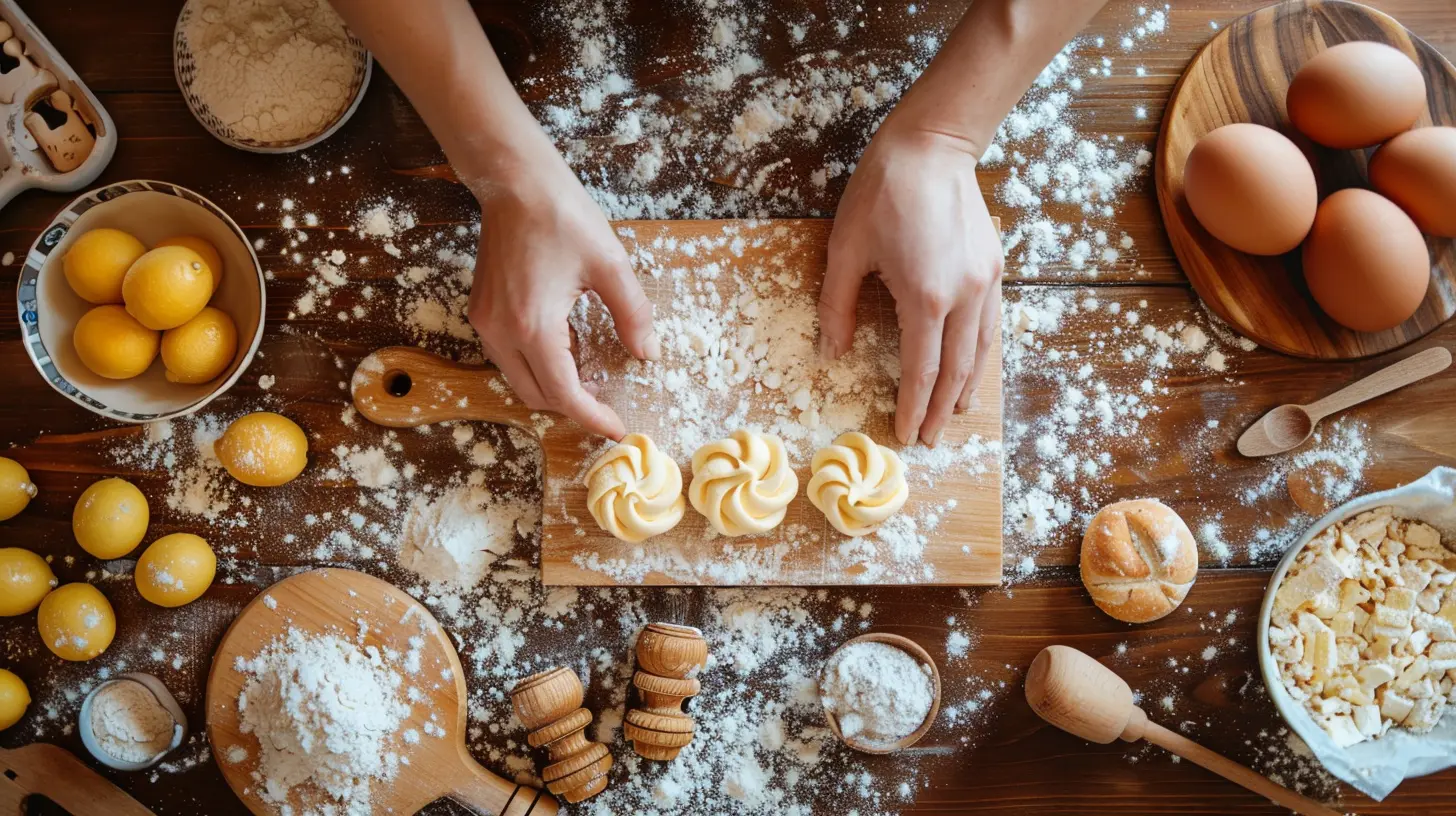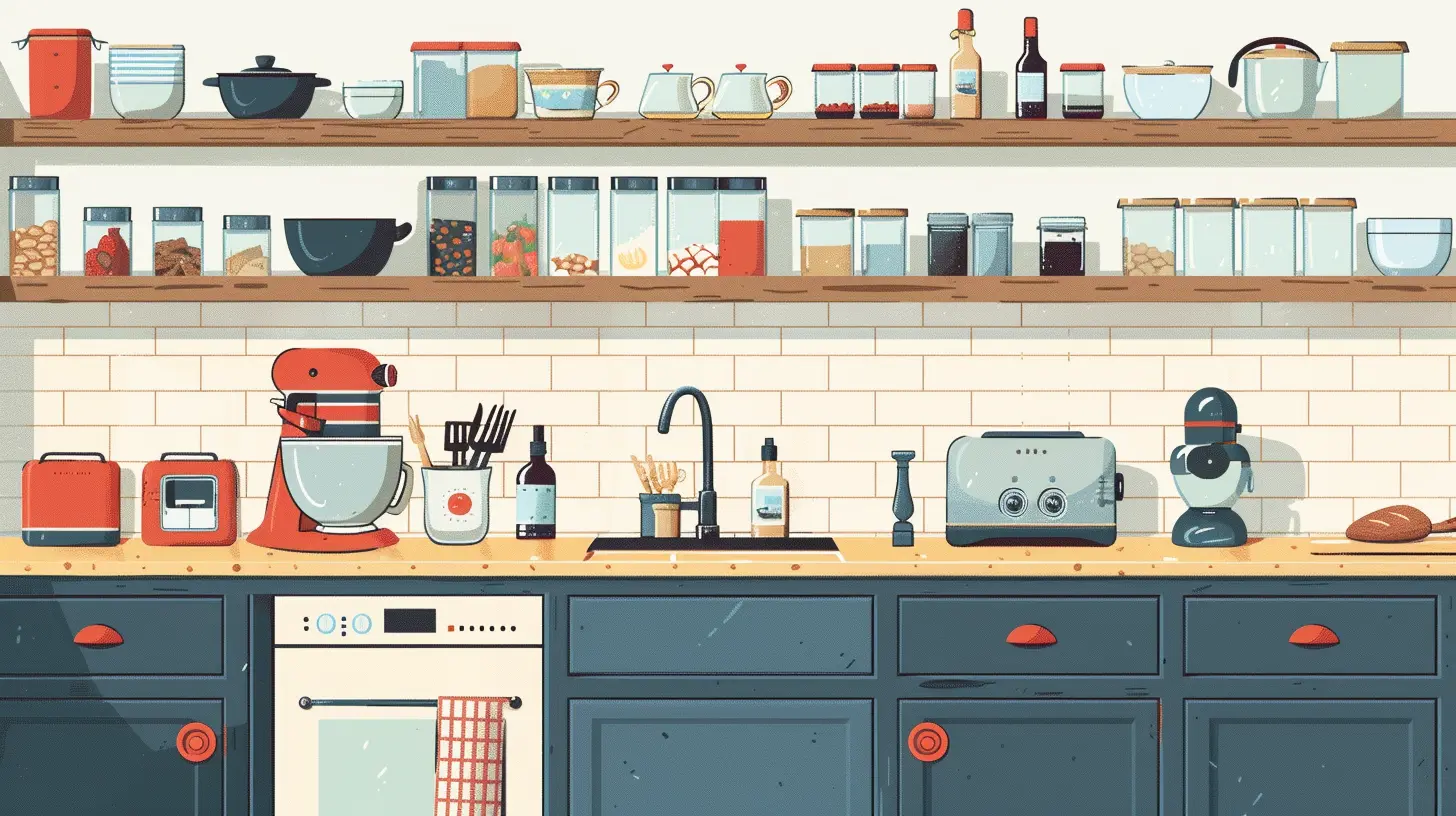Crafting a Child-Safe, Stress-Free Kitchen
2 June 2025
Parenting is a beautiful journey, full of joy, love, and—let's be real—a bit of chaos. And if there’s one place in the house where chaos often peaks, it’s the kitchen. Between meal prep, snack grabs, and those tiny hands that find their way into everything, ensuring a safe and functional kitchen can feel like an Olympic-level challenge.
But don’t worry! With a few thoughtful changes and smart habits, you can turn your kitchen into a space that’s safe for little explorers while keeping your sanity intact. Let’s dive into some simple yet effective ways to create a child-safe, stress-free kitchen. 
Why a Child-Safe Kitchen Matters
The kitchen is the heart of the home, but it's also a hotspot for potential hazards—hot stoves, sharp knives, heavy pots, and slippery floors. Babies and toddlers are naturally curious, and without proper precautions, the kitchen can quickly turn into a danger zone.Creating a child-safe kitchen isn’t just about keeping little fingers out of trouble—it’s about giving yourself peace of mind. When you know your child is safe, you can cook, clean, and enjoy meal prep without constantly looking over your shoulder. 
1. Declutter and Organize
A clutter-free kitchen isn’t just nice to look at—it’s safer too. When everything has a designated place, it's easier to keep dangerous items out of reach.Tips for Keeping Your Kitchen Organized:
- Store sharp objects like knives and peelers in locked drawers or high cabinets.- Keep cleaning supplies and chemicals in a locked cupboard.
- Use labeled bins or baskets to organize utensils, measuring cups, and food items.
- Regularly go through your pantry and fridge to toss expired or unnecessary items.
A well-organized kitchen reduces the risk of accidents while making it easier for you to find what you need—win-win! 
2. Childproof Like a Pro
Childproofing is a game-changer, especially for toddlers who are determined to get into EVERYTHING.Must-Have Childproofing Tools:
- Cabinet Locks – Prevent access to sharp tools, glassware, and cleaning supplies.- Stove Knob Covers – Stop little hands from accidentally turning on the burners.
- Oven Locks – Keep curious kids from opening a hot oven.
- Corner Guards – Protect little heads from sharp counter edges.
- Anti-Tip Straps for Appliances – Secure heavy appliances like the microwave to prevent tipping.
Think of your kitchen the way a toddler does—if it looks fun, they'll want to touch it! Childproofing helps put those hazards out of reach and out of mind. 
3. Create a Safe Cooking Zone
Cooking with kids around can feel like a juggling act, but setting up a safe cooking zone makes it easier.Steps to Keep Kids Safe While You Cook:
- Use the back burners on your stove whenever possible.- Always turn pot handles toward the back of the stove so little fingers can't grab them.
- Keep hot food and drinks away from counter edges.
- If your child insists on being in the kitchen, give them a designated "kid-safe" zone with a small table and plastic utensils for pretend cooking.
A safe cooking area keeps children from wandering too close to danger while still letting them feel part of the action.
4. Set Ground Rules for Kitchen Safety
Kids thrive on routine, so setting some basic kitchen rules can help reinforce safety.A Few Simple But Effective Kitchen Rules:
- No running or roughhousing in the kitchen.- Ask an adult for help before using any kitchen appliance.
- Hands must be washed before and after handling food.
- Only sit on chairs or stools—no climbing on counters!
Consistency is key! The more you reinforce these rules, the safer the kitchen becomes for everyone.
5. Teach Kitchen Safety Early
Kids love to mimic what they see, and the more they learn about safe kitchen habits, the more comfortable they'll become.How to Teach Kitchen Safety by Age:
- Toddlers (1-3 years): Talk about "hot" and "sharp" dangers. Let them watch from a safe distance.- Preschoolers (4-5 years): Show them how to safely use plastic knives to cut soft foods like bananas.
- Older Children (6+ years): Teach them to use simple appliances like the toaster with supervision.
Making safety a learning experience ensures your child grows up understanding how to navigate the kitchen responsibly.
6. Make Meal Prep Stress-Free
Cooking for a family can be overwhelming, but a few simple changes can make meal prep smoother.Tips for a Low-Stress Cooking Routine:
- Plan meals ahead of time to avoid last-minute scrambling.- Use a slow cooker or instant pot for easy, hands-off meals.
- Keep healthy snacks prepped and within easy reach for kids.
- Batch cook and freeze meals for busy days.
By simplifying your cooking routine, you can spend less time stressing and more time enjoying meals with your family.
7. Keep Floors Safe and Clean
A slippery floor is a recipe for disaster, whether you're carrying a hot pot or your toddler is zooming through on a sugar rush.How to Prevent Kitchen Slips and Falls:
- Wipe up spills immediately.- Use non-slip rugs or mats in high-traffic areas.
- Make sure kids wear non-slip socks or shoes.
A clean, dry floor helps prevent accidents and keeps the kitchen a safe space for little feet.
8. Encourage Independent but Safe Participation
Kids love to help in the kitchen, and getting them involved (safely) is a great way to teach life skills.Ways Kids Can Help Without Risk:
- Washing fruits and veggies.- Stirring ingredients in a bowl.
- Setting the table.
- Measuring and pouring (with supervision).
Encouraging safe participation makes kids feel included and helps build their confidence in the kitchen.
9. Have an Emergency Plan
Even with the best precautions, accidents can still happen. That’s why it’s essential to have a plan in place.What Every Parent Should Do:
- Keep a first-aid kit easily accessible.- Teach kids how to call 911 in an emergency.
- Have a fire extinguisher in the kitchen and know how to use it.
- Learn basic CPR and first aid for burns, cuts, and choking.
Being prepared gives you the confidence to handle any kitchen mishaps quickly and calmly.
Final Thoughts
Creating a child-safe, stress-free kitchen doesn’t have to be overwhelming. With some simple adjustments, you can make your kitchen a place where your little ones can safely explore and learn—without the constant worry of accidents.By staying organized, setting ground rules, and involving kids in safe ways, you can turn your kitchen into a family-friendly space where memories (and meals!) are made. So go ahead, make these small changes, and enjoy a kitchen that’s functional, fun, and—most importantly—safe for your little chefs-in-training!
all images in this post were generated using AI tools
Category:
Parenting HacksAuthor:

Tara Henson
Discussion
rate this article
2 comments
Vivian Benson
This article provides invaluable insights on creating a child-safe kitchen that promotes independence while minimizing stress. Implementing these practical tips not only ensures safety but also fosters a positive cooking experience for both parents and children.
June 9, 2025 at 4:37 AM

Tara Henson
Thank you for your thoughtful comment! I'm glad you found the tips helpful for promoting safety and independence in the kitchen.
Greta Alexander
Child-safe kitchen? More like parent sanity savior, right?
June 5, 2025 at 3:06 AM

Tara Henson
Absolutely! A child-safe kitchen not only protects kids but also helps parents enjoy a more peaceful cooking experience.


